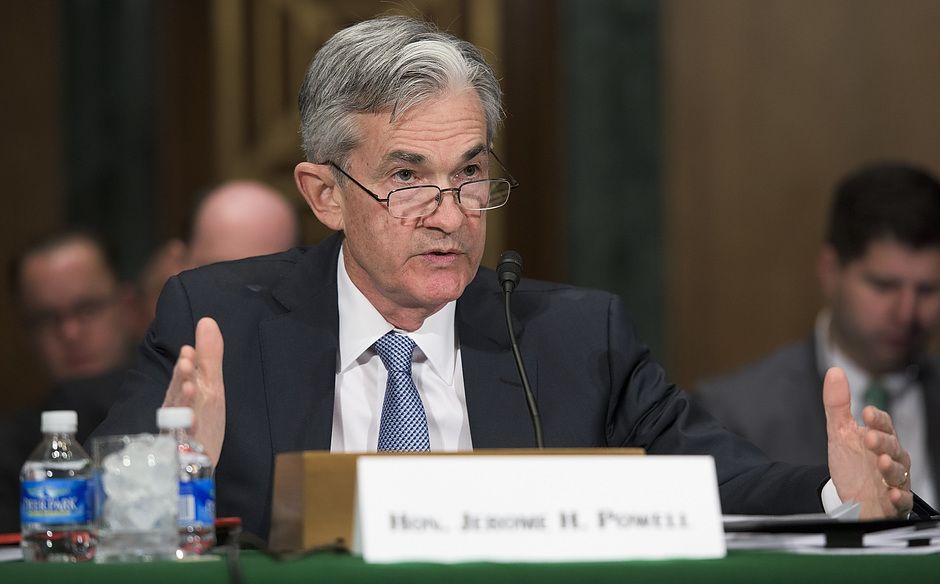Powell's dilemma is a proposed drop to Fed Funds only reveals by correlation

Inflation and the Fed Funds rate shares a negative 90% correlation for 2023 and 2022, negative 52% for 2021, negative 7% for 2020 and negative 10% for 2019. The assessment was based on monthly averages from 2023 to 2019.
WTI for the same 5 year periods to cover monthly averages from 2023 to 2019 correlates to Inflation at current negative 3% and ranged from +70% to +86% from 4 years of monthly averages to range from 2022 to 2019.
WTI correlations to Fed Funds stands at current +25 and ranged from -81% in 2022, negative 13% in 2021, +20% for 2020 and +16% for 2019.
WTI has been trapped since 2019 due to Fed Raises and drops and Inflation's respomse. WTI achieved negative market prices in April 2020 as a result of Fed Fund drops in March 2020 at 150 points. Inflation began March 2020 at 1.5 and dropped April, May and June to 0.3, 0.1 and 0.6.
Inflation and WTI response to Fed interest rate adjustments holds a time lag as WTI moves based on the next Inflation release. Inflation is extraordinarily slow to Fed rate moves.
Powell began the first term as head of the Fed in February 2018 when Inflation was 2.2%. Powell immediately raised Fed Funds in March and June for 50 points. Then another 50 point raise in September and December.
Inflation by June and July 2018 rose to 2.9% and ended the year at 1.9%. WTI rose 16 points from 59.95 to 76.90 from March to October.
Powell then dropped Fed Funds 75 points in August, September and October 2019 when Inflation traded at 1.7%. True to Correlations, Inflation rose to 2.5% by January 2020. WTI rose 15 points from August 2019 to January 2020.
Powell then dropped Fed Funds 150 points in March 2020 at Inflation 1.5%. Inflation then dropped to 0.3 and 0.1 to only begin the climb to 1.4 by December. WTI dropped easily 48 points and traded negative market rates.
The Inflation story to current 2024 began in 2020 as Inflation began a long climb from 0.1 in May 2020 to 9.1 highs in June 2022. WTI traded to 130.50 highs by March 2022 and a massive climb from 2020 negative prices.
Powell then began to raise Fed Funds by 525 point beginning in March 2022 at 8.5 Inflation. WTI began a long drop from 130.50 highs to lows at 64.00's.
The Inflation response to Fed raises and drops appears to contain a 3 month lag before Inflation trades its intended modification. A Fed Funds raise today begins an Inflation drop since 2018 at the 3 month point. WTI is an Inflation release move.
The question for Powell is why drop interest rates 75 points at Inflation 1.7 in 2019 when Inflation traded well all 2019 and under no threat.
The next question is why 150 point Fed Funds drop in 2020 at 1.5 Inflation. Inflation traded more perfectly in 2020 than in 2019.
The evident question is why such diligence since 2018 to Inflation then no reciprocation in 2021 or 2022 and only when Inflation achieved highs at 8.5.
The answer is Powell began his term in 2018 when Fed Funds traded 1.50 to 1.75. Raises in 2018 brought the range to 2.25 to 2.50.
By October 2019 and Fed Fund drops, the Fed Funds range traded 1.50 to 1.75.
By March 2020 at Inflation 1.5, Fed Funds traded a range from 0.0 to 0.25.
As Inflation began to rampage higher from 1.5 to 9.1 in 2 years from March 2020 to March 2022, Powell watched Inflation ascend and failed to act despite plenty of ammunition at Fed Funds 0.00 to 0.25.
The opposite side to Inflation is GDP. As Powell observed higher Inflation, naturally GDP traded to 0.00.
Powell's dilemma is a proposed drop to Fed Funds only reveals by correlation Inflation travels higher. The BOJ informed long ago, once the 2% target achieves then Inflation will trade higher.
Powell now faces Fed Funds at 5.33, Inflation at 3.1 and WTI at current 77.00's. If a criticism of Powell existed, the questions are found in the 2020 Fed Fund drops and failure to act in a timely manner to Inflation rises.
Powell's future decisions and tough spot becomes either a problem or solution to the world as all central bank will follow the Fed.
The more Fed Funds cuts promised or proposed answers how high will Inflation travel. The consumption problem is how high WTI trades depends on Inflation's impending rise. Inflation is the overall driver to WTI as the Inflation trade.
Author

Brian Twomey
Brian's Investment
Brian Twomey is an independent trader and a prolific writer on trading, having authored over sixty articles in Technical Analysis of Stocks & Commodities and Investopedia.

















